سمات
تم تصميم خط إنتاج قضبان التوجيه المجوفة لصنع قضبان توجيه مجوفة مختلفة للمصاعد بسماكة جدار 2.3 مم - 3.2 مم. يتميز خط إنتاج هذا النوع الجديد بمزايا مثل الدقة العالية وسرعة المعالجة العالية. يمكن أن تكون سرعة معالجتها أضعاف السرعة التقليدية.
التطبيقات
تُستخدم المنتجات النهائية على نطاق واسع في المصاعد، إلخ.
عملية تدفق
آلة فك اللف - آلة القص واللحام التناكبي - المجمّع - التسوية - التشكيل بالدلفنة - القطع الطائر - طاولة النفاد
تكوينات الآلة
| 1. مفك مزدوج الرأس |
2. لحام القص واللحام التناكبي
|
| 3. المجمّع الأفقي | 4. التسوية |
| 5. آلة تشكيل لفة | 6. جهاز القطع الطائر |
| 7. جدول النفاد |
ما هو مبدأ عمل ماكينة تشكيل السكك الحديدية التوجيهية؟
تم تصميم ماكينة التشكيل بالدلفنة للسكك الحديدية التوجيهية لإنتاج قضبان التوجيه، والمعروفة أيضًا باسم قضبان الحماية أو حواجز الأمان. يتضمن مبدأ عمل ماكينة تشكيل القضبان التوجيهية عدة خطوات:
- تغذية المواد: تبدأ العملية بلفائف من المواد الخام، عادةً ما تكون من الصلب أو الألومنيوم، والتي يتم تحميلها على آلة فك اللفائف. يتم تغذية المادة في ماكينة التشكيل بالدلفنة من خلال مجموعة من البكرات.
- التشكيل بالدلفنة: تمر المادة الخام عبر سلسلة من المحطات الدوارة التي تقوم كل منها بتشكيل المادة تدريجيًا. يتم وضع هذه البكرات بشكل استراتيجي وتصميمها لتشكيل المظهر الجانبي المطلوب للسكة التوجيهية. تقوم البكرات بالضغط على المادة وثنيها وتشكيلها بالشكل المطلوب.
- القطع: بعد تشكيل مقطع القضيب الموجه، تستخدم ماكينة التشكيل بالدلفنة آلية قطع لقطع الطول المستمر للقضيب الموجه إلى مقاطع فردية بالطول المطلوب. ويمكن القيام بذلك باستخدام طرق قطع مختلفة، مثل القطع الطائر أو القص الهيدروليكي.
- التشكيل والتشطيب: اعتمادًا على المتطلبات المحددة، قد يتم إجراء عمليات إضافية لتحسين وظيفة أو مظهر القضيب التوجيهي. قد تشمل هذه العمليات ثقب الثقوب لتثبيت الملحقات أو النقش لزيادة القوة أو المعالجات السطحية مثل الجلفنة أو الطلاء لمقاومة التآكل.
- التكديس أو التغليف: يتم بعد ذلك إما تكديس مقاطع السكك الحديدية التوجيهية النهائية لمزيد من المعالجة أو تعبئتها للنقل والتسليم.
طوال العملية، تعتمد ماكينة تشكيل القضبان التوجيهية على التحكم الدقيق في البكرات وآلية القطع والمكونات الأخرى لضمان التشكيل الدقيق لمظهر القضبان التوجيهية. يقوم نظام التحكم في الماكينة بتنسيق حركة وتشغيل هذه المكونات، بناءً على المواصفات والإعدادات المطلوبة. وهذا يسمح بإنتاج قضبان توجيه متسقة بدقة وكفاءة عالية.
تطبيق ماكينة تشكيل القضبان الدين السكك الحديدية
صُممت ماكينة تشكيل القضبان DIN خصيصًا لإنتاج قضبان DIN، وهي قضبان معدنية موحدة تستخدم في التركيبات الكهربائية والإلكترونية. يكمن تطبيق ماكينات تشكيل القضبان DIN في إنتاج قضبان DIN لمختلف الصناعات، بما في ذلك:
- تصنيع اللوحات الكهربائية: تُستخدم قضبان DIN بشكل شائع في اللوحات الكهربائية لتوفير منصة تركيب موحدة للمكونات الكهربائية مثل قواطع الدائرة، والمرحلات، والكتل الطرفية، ومصادر الطاقة. يتم استخدام ماكينة تشكيل القضبان DIN لإنتاج قضبان DIN بأحجام وتكوينات مختلفة لتلبية المتطلبات المحددة لمصنعي اللوحات الكهربائية.
- الأتمتة الصناعية: تُستخدم قضبان DIN على نطاق واسع في أنظمة الأتمتة الصناعية لتركيب وتنظيم أجهزة التحكم المختلفة، مثل وحدات التحكم المنطقية القابلة للبرمجة (PLCs)، وبادئات المحركات، والموصلات، ووحدات توزيع الطاقة. تلعب ماكينة تشكيل القضبان DIN دورًا حاسمًا في تصنيع قضبان DIN المتوافقة مع أبعاد التركيب القياسية المستخدمة في تطبيقات الأتمتة الصناعية.
- أتمتة المباني: تُستخدم قضبان DIN في أنظمة التشغيل الآلي للمباني لتركيب أجهزة التحكم في التدفئة والتهوية وتكييف الهواء (التدفئة والتهوية وتكييف الهواء) والإضاءة وأنظمة الأمن وغيرها من أنظمة إدارة المباني. تنتج ماكينة تشكيل القضبان DIN قضبان DIN التي تتيح سهولة تركيب وتنظيم أجهزة التحكم هذه داخل البنية التحتية لأتمتة المباني.
- أنظمة الطاقة المتجددة: تجد قضبان DIN تطبيقات في أنظمة الطاقة المتجددة، بما في ذلك منشآت الطاقة الشمسية وأنظمة طاقة الرياح. وهي تُستخدم لتركيب مكونات مثل محولات الطاقة الشمسية ووحدات التحكم في الشحن وأجهزة المراقبة ومعدات الاتصالات. تعمل ماكينة تشكيل القضبان DIN على تسهيل إنتاج قضبان DIN المناسبة لتطبيقات الطاقة المتجددة هذه.
- السكك الحديدية والنقل: تُستخدم قضبان DIN أيضًا في أنظمة السكك الحديدية والنقل لتركيب أجهزة التحكم والمعدات الكهربائية في القطارات والترام والمركبات الأخرى. يتم استخدام ماكينة تشكيل القضبان DIN لتصنيع قضبان DIN التي تلبي متطلبات أنظمة النقل هذه، مما يضمن تركيب آمن وموثوق للمكونات الكهربائية.
بشكل عام، ينتشر استخدام ماكينات تشكيل القضبان الحديدية DIN على نطاق واسع في الصناعات التي تعتمد على أنظمة تركيب موحدة للمكونات الكهربائية والإلكترونية، مما يوفر حلولاً فعالة وموثوقة لتركيب المعدات وتنظيمها.
ما هي الاختلافات بين ماكينة تشكيل القضبان المنزلقة وماكينة تشكيل القضبان الدين؟
يمكن شرح الفرق بين ماكينة تشكيل القضبان المنزلقة وماكينة تشكيل القضبان DIN على النحو التالي:
- الغرض: تُستخدم ماكينة تشكيل القضبان المنزلقة بشكل أساسي لتصنيع القضبان المنزلقة التي تُستخدم لتوجيه ودعم وتسهيل حركة الأجسام. وهي تستخدم عادة في الآلات، وأنظمة الأتمتة الصناعية، ومعدات النقل، وغيرها من المجالات. من ناحية أخرى، تُستخدم ماكينة تشكيل القضبان DIN لتصنيع قضبان DIN، والتي تُستخدم لتركيب وتثبيت المعدات الكهربائية والإلكترونية.
- الشكل والحجم: عادةً ما يكون للقضبان المنزلقة مقطع عرضي على شكل حرف U أو على شكل حرف C ويمكن أن تكون ذات فتحة واحدة أو متعددة الفتحات. ويمكن تخصيص أبعادها وأشكالها بناءً على متطلبات التطبيق المحددة. من ناحية أخرى، تلتزم قضبان DIN بمعايير DIN وعادةً ما يكون لها مقاطع عرضية وأبعاد موحدة لتسهيل تركيب وتركيب الأجهزة الكهربائية والإلكترونية بشكل مريح.
- طريقة التركيب: عادةً ما يتم تركيب القضبان المنزلقة باستخدام مسامير أو براغي أو مثبتات أخرى لتوفير دعم وتوجيه قابل للتعديل أو متحرك. من ناحية أخرى، عادةً ما يتم تركيب قضبان DIN مباشرة على قواعد الأجهزة الكهربائية أو الإلكترونية باستخدام براغي التثبيت أو مثبتات أخرى.
- عملية التصنيع: تختلف عمليات التصنيع لماكينات تشكيل القضبان المنزلقة وماكينات تشكيل القضبان DIN اختلافًا طفيفًا. تقوم ماكينة تشكيل القضبان المنزلقة بتشكيل وتقطيع مادة اللفائف المستمرة إلى الشكل الجانبي المطلوب للقضيب المنزلق باستخدام سلسلة من البكرات وأجهزة القطع بناءً على شكل وأبعاد القضيب المنزلق. تقوم ماكينة تشكيل القضبان المنزلقة، وفقًا لمعايير DIN، بتشكيل وقطع المواد اللولبية باستخدام بكرات وأجهزة قطع محددة لتلبية المتطلبات القياسية لقضبان DIN.
باختصار، تخدم ماكينات تشكيل القضبان المنزلقة وماكينات تشكيل القضبان DIN تطبيقات ومتطلبات تركيب مختلفة. تُستخدم القضبان المنزلقة لتوجيه ودعم حركة الأجسام، بينما تُستخدم قضبان DIN لتركيب وتثبيت المعدات الكهربائية والإلكترونية. وهي تختلف من حيث الشكل والحجم وعملية التصنيع لتلبية احتياجات التطبيقات المحددة والمتطلبات القياسية.


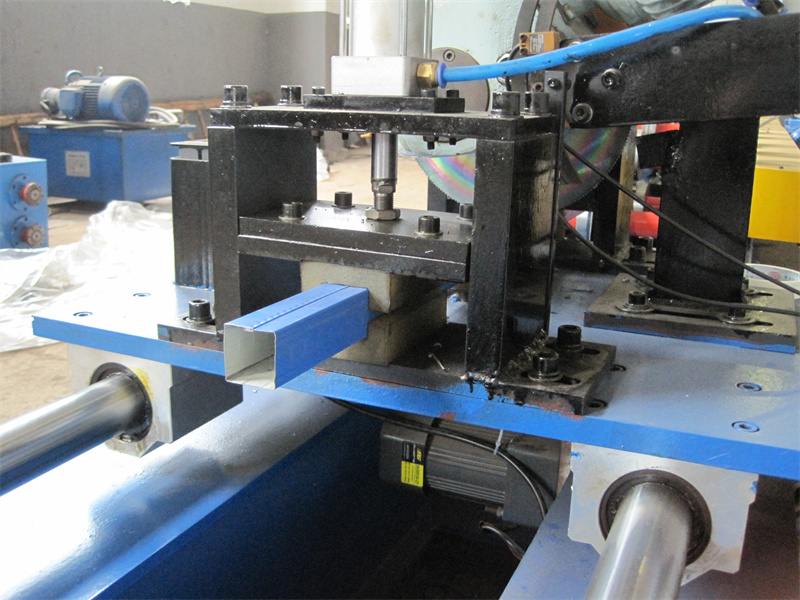
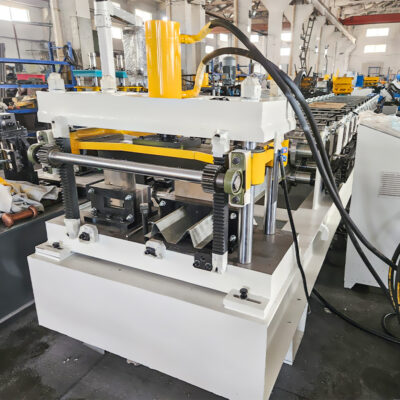
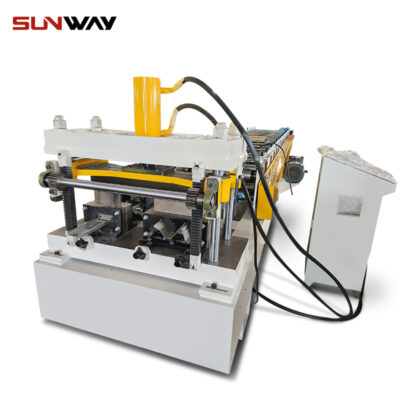
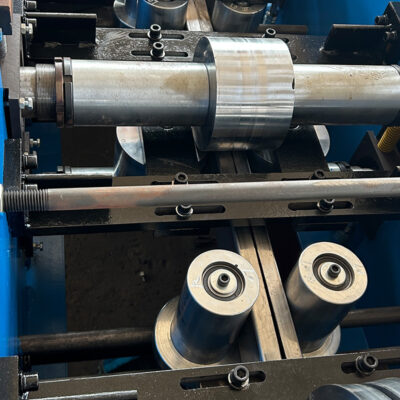
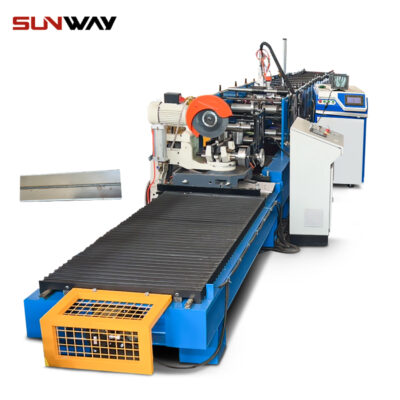
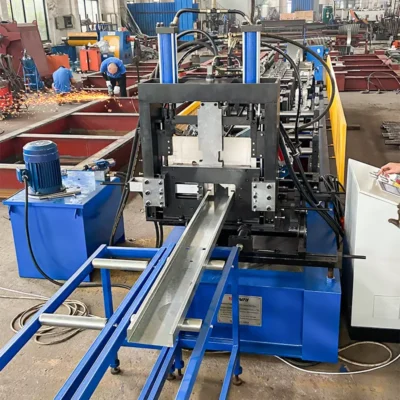

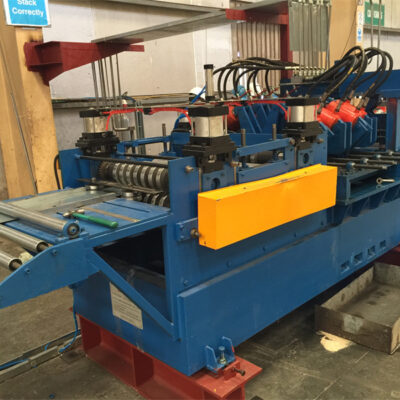
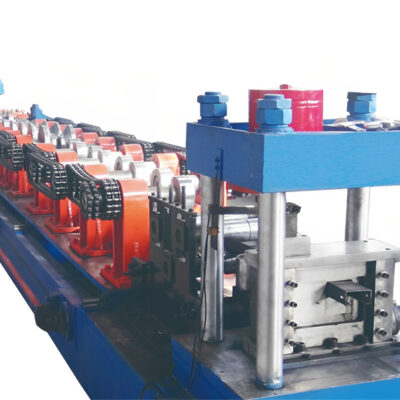


المراجعات
لا توجد مراجعات بعد.